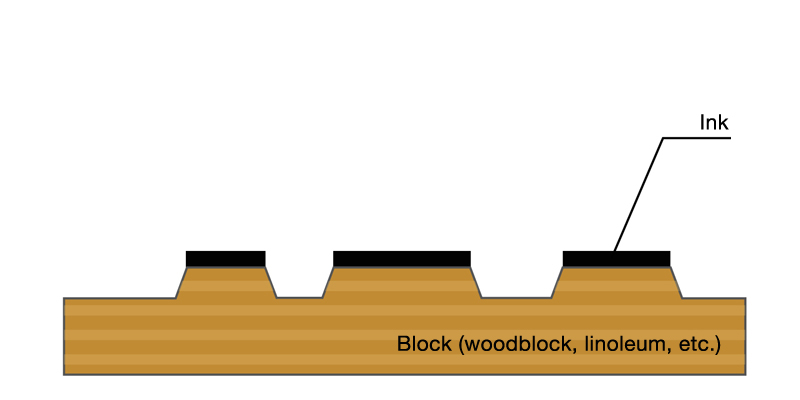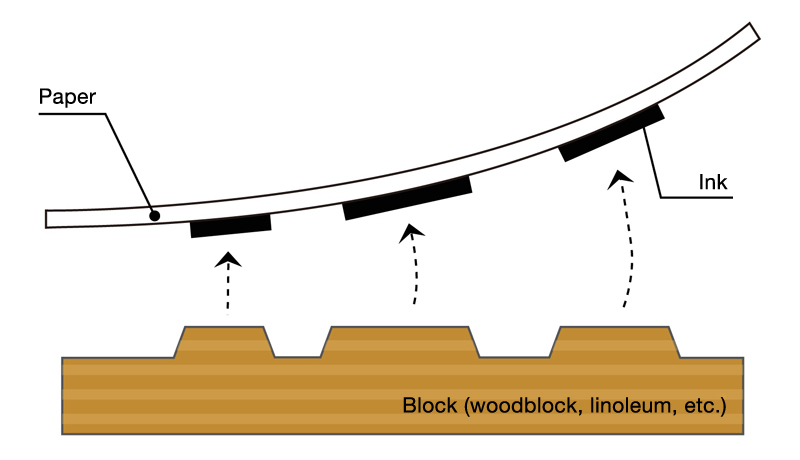Letterpress
凸版
Toppan
CATEGORIES
In block printing, letterpress (toppan) is a plate format that uses a plate with a convex surface on its type page. It places ink on the convex section produced on the plate and then produces the print on the paper via pressure from above. The format is used for woodcut printing, which make the convex surface with a chisel (chokokutō), wood engraving printing, which uses burin, linoleum-based linocut, and typography. In the printing industry, flexographic printing—which is quickly becoming the mainstream in package printing in Europe and the United States—is also an example of the letterpress form.
There are four plate forms of block prints: the letterpress (toppan), the intaglio (ōhan), the planograph (heihan), and the mimeograph (kōhan). Compared to the intaglio, the planograph (heihan), and the mimeograph (kōhan), which all have different block shapes, the letterpress (toppan) dates back the farthest. Among the considerable number of block prints, woodblock prints are especially old, having been used the longest as a printing technology. At present, the oldest prints to have used the block are said to be the Buddhist sutras, which were produced from woodblocks in the eighth century in Japan. In China, however, it is said that woodblock printing has been used since as early as the seventh century. In the West, woodblock prints were produced as religious pictures beginning in the middle of the fourteenth century, but it was really with Johannes Gutenberg’s (1395-1468) invention of the metallic movable-type printing (kinzoku kappan insatsu) in the Renaissance period that printing techniques started to develop rapidly.
The basic process of letterpress (toppan) plate-making involves leaving the necessary drawing sections as the plate, while chiseling away the unnecessary parts (the non-drawing parts) to form the convex portions. The artist then puts water-based inks (such as paint) or oil-based inks onto the convex parts, places paper on it, and then presses out the ink while applying pressure with a baren or press. In flexographic printing, an industrial printing method, the plate takes the shape of a cylindrical roller that uses resin and rubber. Plate-making occurs via photoengraving, laser engraving, and so forth. In addition to the plate roller, there are others rollers: one that fills ink into the convex sections and another that clamps together the paper and plate and proceeds to print.
 Ink (paint) on a printing block
Ink (paint) on a printing block A transferred image
A transferred image
